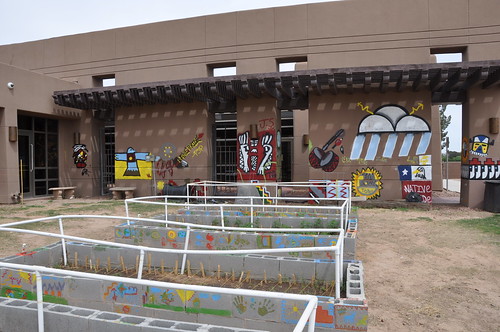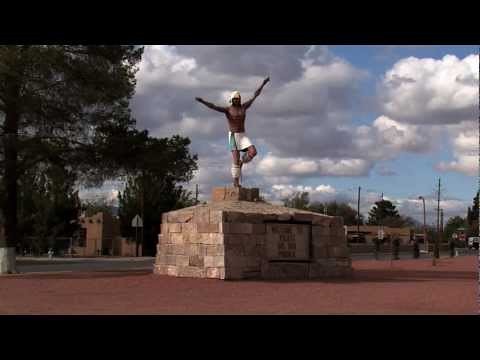
This year, the Natural Resources Conservation Service (NRCS) will continue its resolution to build on its partnerships with Indian Country by supporting sustainably-managed crops and innovative ways to produce crops that are compatible with tribal cultures.
An example of these efforts is the relationship between the Ysleta del Sur Pueblo Tribe, located near El Paso, Texas, and NRCS. Working with NRCS, the Tribe constructed a seasonal high tunnel system at the Pueblo Education Center during a two-day workshop. The system provides an opportunity for Native youth to grow crops and take home fresh produce for healthy meals.
The tribe, also known as the Tigua, established the high tunnel system to show Native youth how to extend the growing season, increase crop production, protect crops, and increase crop health and vigor on a small-scale. The high tunnel effort, which builds on an existing community garden project, teaches students how to grow corn, squash, and beans, which are three of the tribe’s most important crops. Youth in the afterschool program learn how to grow plants, understand the nutritional value in fresh vegetables, and see the benefits of their efforts.

“Our hope is to get our community involved,” said Evaristo Cruz, Environmental and Natural Resources Department Director for the Ysleta del Sur Pueblo. “Our young people have grown up in an urban setting. With the encroachment of El Paso, some of our young people think the grocery store is where food comes from. Hopefully, this will get them to understand our heritage and how farming is very important.”
In schools, students learn how to plant traditional seasonal crops, allowing the youth to [experience] hands-on learning, said Stephanie Reyes of the Ysleta’s Diabetes Awareness Program and the Good Health and Wellness in the Indian Country Project. “During harvest, we have a cooking class for families where they learn how to prepare the foods, including our traditional foods, with crops such as verdolagas, which are grown in our high tunnel where we have already harvested over 25 pounds of produce.”
With continued classroom learning and hands-on experiences, youth and their families become familiar with the conservation techniques and expand their community’s resources by applying them to their own land. High tunnels and gardens are win-win ways to bringing good food and good health to the Tigua.
Visit the Tribal Assistance page for more information on conservation opportunities for Native producers.




